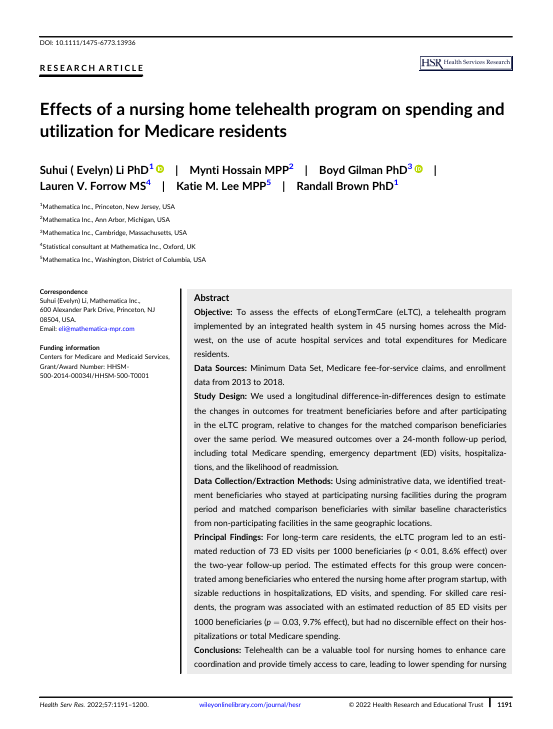Headline
A nursing home telehealth program resulted in reduced emergency department (ED) visits and health care expenditures for Medicare beneficiaries.
Background
There is an opportunity for telehealth to support individuals in nursing facilities where patients frequently have complex conditions and/or functional limitations that require coordination of care across providers and can make it challenging to access health care services not provided onsite. This study examined the impact of a multi-pronged, nursing home telehealth intervention on hospital service utilization and total health care costs. The program provided urgent and specialty care telehealth consults, telehealth transitional care coordination, and nursing home staff training on use of telehealth services.
Findings
Using data from 2014 to 2018, this study applied a longitudinal difference-in-difference design to compare outcomes between residents in 45 participating nursing home facilities and a comparison group in non-participating facilities — analyzing long-term care and short-term skilled care nursing home residents separately.
For long-term care residents, the telehealth program was associated with a statistically significant reduction in ED visits (a reduction of 73 visits per 1,000 beneficiaries), and a marginally significant reduction in Medicare expenditures (a $73 per member per month reduction) over a two-year period. Reductions were concentrated in newly admitted long-term care residents. There were no statistically significant changes in hospitalizations or readmissions.
For short-term skilled care residents, the telehealth program was associated with a statistically significant reduction in ED visits (a reduction of 85 visits per 1,000 beneficiaries) over a two-year period. There were no statistically significant changes for hospitalizations, readmissions, or Medicare expenditures.
Policy/Program Takeaways
Telehealth can help reduce unnecessary care and reduce costs for nursing home residents. Nursing homes and other providers may consider opportunities for telehealth to support care coordination and how to train staff to effectively use telehealth. Payers and policymakers may consider strategies for supporting and incentivizing the use of telehealth in nursing home settings.

